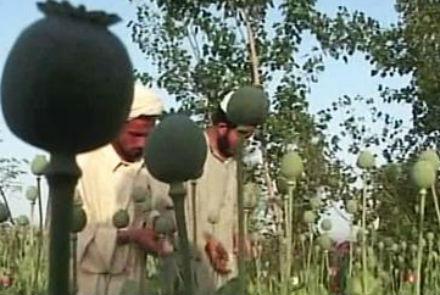The World Drug Report released by the United Nations Drugs and Crime Office’s (UNODC) on Thursday shows a decrease in opium cultivation in the country in 2019 in which Afghan farmers planted opium poppy on 163,000 hectares of land.
This, according to the report, is 38 percent less than in 2018 when 263,000 hectares was planted.
The UNODC report says that all the main opium poppy-growing provinces saw significant decreases in the amount of land growing poppy in 2019.
In Nangarhar, the report says, this decreased by 82 percent, Nimroz by 78 percent, Kandahar by 40 percent, Uruzgan by 38 percent, Farah by 35 percent and Helmand by 34 percent.
On average, this reduction of 38 percent can be attributed mainly to developments in the opium market, UNODC found.
Following two years of very high levels of production, the average farm-gate price (price at point of cultivation without added transportation or other costs) per kilogram of fresh opium fell to $52 in 2019 from $76 USD in 2018, the report says.
UNODC estimated the 2019 total farm-gate value as $404 million, a decrease of 33 percent from its 2018 value, according to an analysis by the Afghanistan Analysts Network (AAN).
In 2019, the area under cultivation was the lowest recorded since 2013, AAN says in its analysis on the UN report.
In previous years, farmers, especially in the all-important south-western region, typically reported disease as the main reason for low to moderate yields. This region, also known as Greater Kandahar, includes Helmand province which, were it a separate country, would be the largest opium producer worldwide, according to AAN analysis.
In 2019, Greater Kandahar produced 4,920 metric tons of opium, representing more than two-thirds of this year’s total opium production nationwide. In the southern region (Loya Paktia and Ghazni), the harvest doubled compared to 2018, ANN says in its analysis citing UN report.
AAN says that for the first time since 1994, the UNODC did not release its findings in an annual opium survey and has said the government is suspected of having blocked publication.
The White House Office of National Drug Control Policy estimates released in February 2020 show similar results, according to AAN. The White House report says opium poppy was planted on 160,000 hectares, a decrease of 28 percent from 221,000 in 2018.



Comment this post